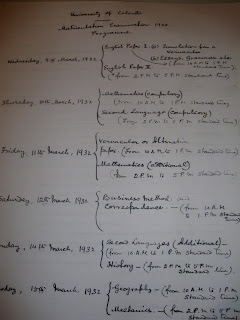The modern system of education was adopted by the Government of Sikkim in the first decade of the last century. In my last post I have talked about the foundation of Gangtok School in 1906. The interesting fact about the then education system is that all the schools of Sikkim were affiliated to the Calcutta University. From the correspondence between the Judicial Secretary to His Highness the Maharaja of Sikkim and the Registrar Calcutta University it appears that, the appointment of the teachers in various schools of Sikkim was also watch over by the said University itself. The letter gives the impression that; a list of desired candidates was to be forwarded by the Sikkim Durbar to the University of Calcutta for the approval. As the endorsement letter of the University reached to the concerned department, the Sikkim Durbar had to assign them as the teachers in the different schools.
Sikkim's First Governor Sworn In
5 hours ago































